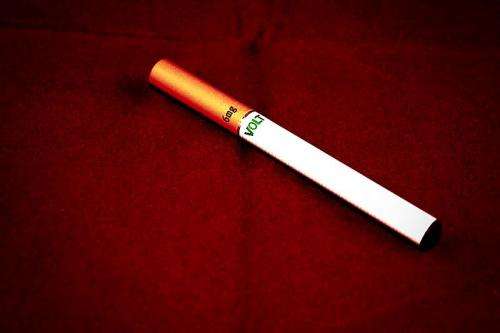New study challenges claims on aldehyde content of third generation e-cigarettes

In January 2015 a report published as a research letter to the New England Journal of Medicine (NEJM) found that a 3rd generation e-cigarette (an e-cigarette with variable power settings) set to the maximum power and long puff duration generated levels of formaldehyde that, if inhaled in this way throughout the day, would several times exceed formaldehyde levels that smokers get from cigarettes. Media worldwide accordingly reported this new health hazard of e-cigarettes.
A new study published online today in the scientific journal Addiction took a closer look at the NEJM findings in the context of real-world conditions. It concluded that 3rd generation e-cigarettes can indeed produce high levels of aldehydes - but only under extreme conditions which human smokers can be expected to avoid because of the immediate unpleasant sensory effects.
The Addiction study, led by cardiologist Dr. Konstantinos Farsalinos, found that it was possible to get e-cigarettes to produce high levels of aldehydes, but only in what is known colloquially as 'dry puff' conditions. As Farsalinos explains: "Our results verify previous observations that it is possible for e-cigarettes to generate high levels of aldehydes; however, this is observed only under dry puff conditions, which deliver a strong unpleasant taste that vapers detect and avoid, by reducing power levels and puff duration or by increasing inter-puff interval. Minimal amounts of aldehydes are released in normal vaping conditions, even if high power levels are used. In those normal-use conditions, aldehyde emissions are far lower than in tobacco cigarette smoke."
To inhale more formaldehyde than that produced by a standard cigarette, a vaper would need deliberately and repeatedly to experience what one vaping blog describes as 'the dreaded dry puff': "Dry puffs, also known as 'dry hits', suck. They taste awful, can make you cough, and can also have the terrible side effect of leaving e-liquid in your mouth. Once you experience it, you'll probably do all you can to prevent it from happening again!"
Professor Peter Hajek, director of the Tobacco Dependence Research Unit at Barts and The London School of Medicine and Dentistry, UK, says of the Addiction study: "These findings emphasise the importance of making clear the conditions in which tests of this kind are undertaken and avoiding sweeping assertions that can mislead the public. Vapers are not exposed to dangerous levels of aldehydes. My reading of the evidence is that e-cigarettes are at least 95% safer than smoking. Smokers should be encouraged to switch to vaping."
More information: Farsalinos K, Voudris V, and Poulas K. (2015) E-cigarettes generate high levels of aldehydes. Addiction 110: DOI: 10.1111/add.12942
Jensen RP, Luo W, Pankow JF, Strongin RM, Peyton DH. Hidden formaldehyde in e-cigarette aerosols. NEJM [Internet]. 2015 [cited 30 April 2015].372:392-394. DOI: 10.1056/NEJMc1413069.


















